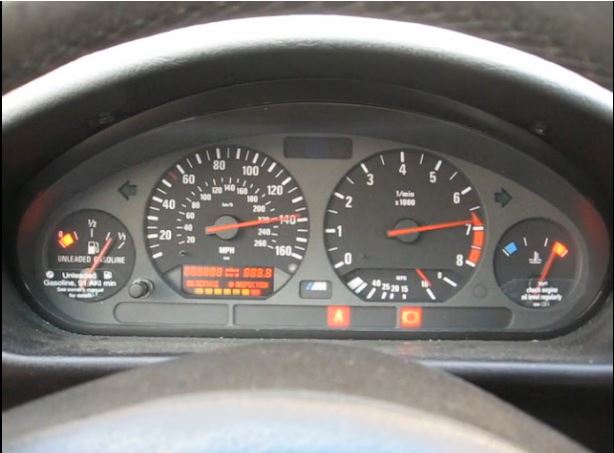The onboard computers in modern BMWs contain a wealth of information. Much of this information can be accessed by the owner, yet BMW doesn’t include such information in owner’s manuals or any other documentation.
The story I wrote about the BMW hidden menu options in my 2002 E39 M5 has become one of the most popular Wheel stories on this site. So I’m returning to the topic and looking at the BMW hidden menu options available on my 1999 E36 M3.
Like the E39 M5, most of this information requires you to first unlock your computer. Here are E36 unlock instructions courtesy of BMWE36blog.com:
Accessing Data in the OBC:
The OBC contains a lot of data, and displays the data in a manner determined by the country code that is stored in it. The technique to access this data is as follows:
Press the 1000 and 10 keys simultaneously. You should see Test-Nr.: appear in the display.
The table below lists the available test codes that are available. Enter a test code number, using the number keys, followed by the SET/RES key. However, to access codes other than 1, 10, 14, 19, and 21,
you have to first unlock the OBC, using the procedure described below.
Read the results.
For test numbers 10 and 11, enter a new value (if desired) and press SET/RES.
Return to the normal display functions by pressing CHECK or any other key.Unlock the Display:
Most of the test sequences require you to first unlock the display before. Enter test code 19 using the above procedure. The display should read LOCK:ON. Then enter an unlocking code consisting of the sum of the current month plus date (for example, if today is July 11, enter 18). Then press SET/RES, and the OBC is now unlocked.
Here’s a good video from YouTube member Bizlur showing how to cycle through your cluster display, how to partially disengage traction control and how to adjust the speed to volume setting of the radio:
As an owner, I’d say some of these options aren’t very valuable. However, things like Test 7 (fuel remaining in liters) could be extremely useful if your fuel gauge becomes unreliable. And being able to partially (as opposed to fully) disengage the traction control could be useful in certain wintery road situations.
These tricks are a reminder that no matter how much you know about your BMW, there’s always more to learn. For enthusiast owners, that’s a good thing!
